Top Drainage Pipe Choices: A Detailed Overview
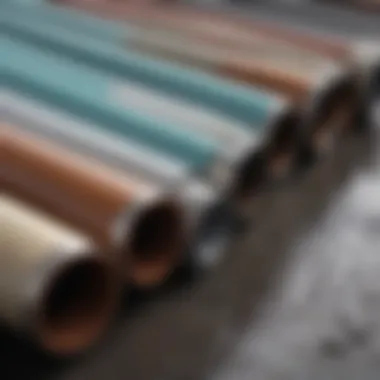
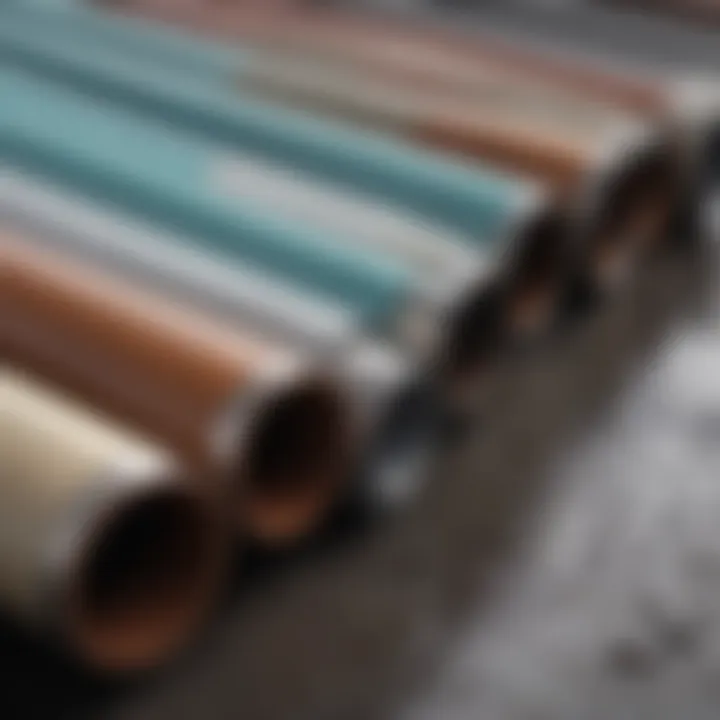
Overview of Topic
When it comes to home improvement, drainage systems often don’t get the spotlight they deserve, yet they play a crucial role in maintaining a safe and clean environment. Effective drainage is essential for preventing water accumulation, which can lead to significant structural damage over time. Homeowners frequently find themselves grappling with the decision of selecting the right drainage pipe to fulfill their needs. This choice can greatly affect not just the functionality of their drainage system but also the longevity and efficiency of their home.
Understanding the types of drainage pipes available, along with their respective advantages, is vital for making informed choices. Whether you are installing a new system or upgrading an existing one, having the right knowledge can ensure your home is protected against potential water-related issues.
Common Challenges and Solutions
Homeowners often encounter various challenges when it comes to drainage systems, ranging from pipe blockages to inadequate water flow. Some of the most prevalent problems include:
- Clogs and Blockages: Leaves, debris, and sediment can build up in drainage pipes, leading to poor drainage performance.
- Improper Installation: A poorly installed drainage system can create flooding in low areas of your property.
- Material Durability: Choosing the wrong material can lead to corrosion, cracks, and ultimately leakage.
To address these issues, consider the following tips:
- Regularly clean your drainage systems by removing debris and checking for blockages.
- Ensure proper installation techniques are followed, involving professional help where necessary.
- When selecting materials, prioritize durability and compatibility with local climate conditions to enhance longevity.
Product Recommendations
A variety of products are available in the market that cater to different drainage needs. Here’s a detailed look at a few standout options:
- PVC Pipes:
- HDPE Pipes:
- Concrete Pipes:
- Benefits: Lightweight, corrosion-resistant, and easy to install, making them a popular choice for homeowners.
- Features: Smooth interior walls allow for efficient water flow.
- Benefits: Excellent resistance to chemicals and impact, beneficial for agricultural drainage.
- Features: Flexibility allows for installation in various terrains.
- Benefits: Durable and can withstand heavy loads, suitable for municipal drainage systems.
- Features: Long lifespan, making them a worthy long-term investment.
"Choosing the right drainage pipe can mean the difference between a dry basement and a flooded foundation."
Step-by-Step Guides
Installing a drainage system may seem daunting, but breaking it down into manageable steps can simplify the process:
- Plan the Layout: Determine where water accumulates around your property. This will guide you in deciding the best areas for installation.
- Select the Right Materials: Based on your needs and environmental factors, choose appropriate piping materials.
- Dig the Trench: Create a trench that is wide enough for the drainage pipe system and deep enough to allow for proper slope—aim for a drop of at least 1 inch per 8 feet in length.
- Lay the Pipe: Place the pipe in the trench with the proper slope directing toward the drainage outlet.
- Cover and Test: Backfill the trench with gravel and soil, ensuring that the system is tested for effectiveness.
Navigating the intricacies of drainage pipes—materials, challenges, and installation—is fundamental to securing a home’s integrity against water damage. By understanding these elements, homeowners can take the necessary steps to ensure their drainage systems effectively manage water, promoting a safe living environment.
Understanding Drainage Pipes
Drainage pipes play a pivotal role in any property, serving to manage surplus water effectively and protect structures from water damage. Understanding these essential components helps homeowners and property managers select the right products for their specific needs. People might overlook the significance of drainage systems until faced with flooding or water accumulation issues.
Why is it Important?
Choosing the right drainage pipe can save money in the long run. Proper drainage prevents water-related issues like mold, basement flooding, and erosion, which can lead to costly repairs. It’s not just about moving water away; it's about ensuring the overall health of a property. Moreover, understanding the types of drainage pipes available aids in making informed decisions based on site requirements and local regulations.
Definition and Importance of Drainage Pipes
Drainage pipes are specifically designed conduits used to transport excess water away from areas where it can cause damage. Typically installed underground, these pipes direct water from roofs, driveways, or other surfaces to appropriate drainage systems or natural bodies of water.
- Structural Health
A sound drainage system ensures long-term viability of structures. Neglecting proper drainage can result in weakened foundations or the growth of harmful mold. - Prevent Over-saturation
Drainage pipes help manage groundwater levels, reducing the risk of soil erosion and over-saturation. Proper management is crucial for landscaping and agriculture. - Legal Compliance
Many municipalities have regulations regarding drainage systems. Using approved materials and methods is not just prudent but legally required in many areas.
How Drainage Systems Function
At the heart of effective drainage is a well-designed system that integrates various components, including pipes, catch basins, and ditches.
- Water Collection:
Water first accumulates in catch basins or drainage inlets, where larger debris is filtered out. - Flow Direction:
Gravity plays a major role in the efficiency of these systems. Drains are laid with a slope, helping guide the water through the pipes. - Sewer Connection:
Some residential systems directly channel excess water into municipal sewers. However, in rural areas, they might connect to retention ponds or nearby water bodies. - Regular Maintenance:
Like any system, regular checks are necessary to ensure blocked pipes are cleared, and systems are functioning as intended. This maintenance makes sure that water flows unobstructed, especially during heavy rain periods.
Types of Drainage Pipes
Understanding the different types of drainage pipes is crucial for homeowners looking to optimize their property's drainage system. Each material offers unique characteristics, benefits, and potential drawbacks that can significantly influence the effectiveness and longevity of the drainage system. Choosing the right type of pipe not only impacts performance but also speaks to budget, maintenance efforts, and environmental considerations.
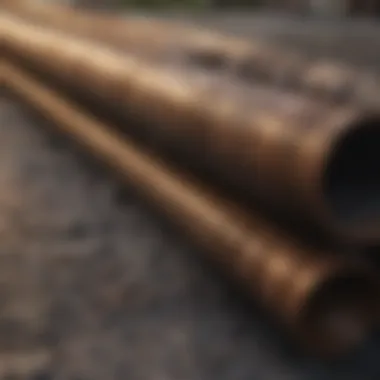
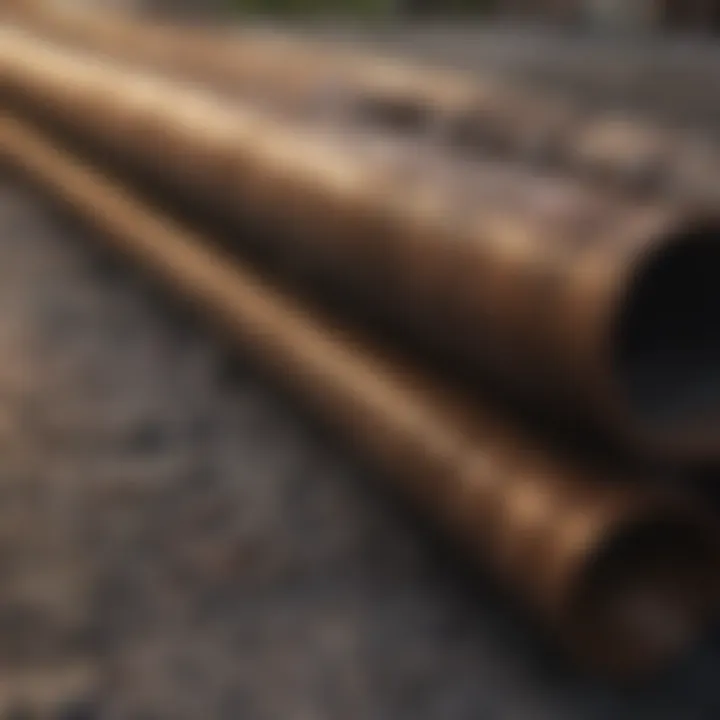
PVC Pipes: Characteristics and Benefits
PVC, or Polyvinyl Chloride, pipes have become a popular choice for drainage systems. One of their standout traits is their lightweight yet sturdy construction, making installation a breeze. They don’t corrode, which is a huge plus in various environments. Also, PVC's smooth interior surface allows for efficient water flow, reducing the chance of clogs.
Benefits of PVC pipes include:
- Cost-effectiveness: Generally cheaper than other materials.
- Longevity: They can last up to 100 years under the right conditions.
- Versatility: Suitable for both residential and commercial drainage systems.
Homeowners appreciate PVC pipes due to their ease of installation. You'll usually find them at hardware stores as pre-cut lengths, simplifying the process. However, one should consider their susceptibility to UV rays, which can lead to brittleness over time if installed in exposed conditions.
Copper Pipes: Advantages and Drawbacks
Copper pipes, although less common in drainage applications, still offer notable benefits. One significant advantage is their resistance to corrosion and decay. As a material known for its durability, copper pipes are often overlooked for drainage purposes, yet they can withstand high temperatures and pressures, making them suitable in a wide range of applications.
On the downside,* copper pipes tend to be on the pricier side, which can deter homeowners from considering them, especially when budget is a top priority. *
- Advantages:
- Drawbacks:
- High resistance to corrosion.
- Lifespan of over 50 years when properly maintained.
- Higher material cost compared to alternatives.
- Susceptibility to freezing in cold climates.
Steel Pipes: Durability and Use Cases
Steel pipes are a robust choice for drainage systems. Known for their incredible strength, they can handle significant pressure and are less prone to cracking under stress. One major point in their favor is this durability, especially in commercial settings or in places where heavy loads are a concern.
However, there’s a caveat: rust. Steel is prone to corrosion when exposed to moisture unless it’s treated. Homeowners should weigh the following factors before opting for steel pipes:
- Durability: Excellent strength and longevity of up to 75 years with proper maintenance.
- Maintenance requirements: Regular inspections and possible treatments for rust prevention may be necessary.
- Applications: Ideal for large-scale drainage systems or industrial applications.
Clay Pipes: Historical Significance and Modern Relevance
Clay pipes, one of the oldest materials used in drainage, are experiencing a comeback, particularly in eco-friendly projects. Their historical roots trace back to ancient civilizations, and while they were once the standard, modern advancements have redefined their use.
Key features of clay pipes include:
- Natural materials: Made from ceramic, they are environmentally friendly.
- Longevity: With lifespans exceeding 100 years, they are incredibly durable.
They do have some limitations, such as being heavy and somewhat brittle, which can make installation challenging. Nonetheless, they’re suitable for projects aiming for sustainability. This puts clay pipes back in the game in our eco-conscious era.
Perforated Pipes: Applications in Drainage Systems
Perforated pipes serve a specific purpose within drainage systems, often used to manage groundwater. The holes in these pipes allow for the absorption of water from surrounding soil, facilitating better drainage in areas prone to flooding or excess moisture.
The versatility of perforated pipes shines in various applications, such as:
- French drains: Designed to redirect surface water and groundwater away from a property.
- Leach fields: Used in septic systems to purify wastewater.
However, it's crucial to remember that proper installation is vital to ensure they function effectively. A poorly placed perforated pipe may do more harm than good, leading to issues down the line.
"Choosing the right type of drainage pipe can significantly reduce future maintenance and increase the lifespan of your drainage system."
Understanding the pros and cons of each type equips homeowners with the tools to make informed choices. Each has its niche, making it essential to assess personal needs and conditions before making a selection.
Factors to Consider When Choosing a Drainage Pipe
Selecting the right drainage pipe can feel like walking through a minefield. With so many options on the market, it's crucial to hone in on several key factors that can influence your final decision. If you want to set your drainage up for success, understanding these aspects is paramount. Not only will these considerations aid in achieving effective drainage, but they also ensure that you're not tossing your hard-earned cash down the drain—quite literally.
When diving into the nitty-gritty of drainage pipes, the following factors should be at the forefront of your mind:
- Material Composition and Performance
- Cost Analysis
- Environmental Considerations
- Installation Complexity
Each factor plays a unique role that can affect the functionality and longevity of your drainage system. Making an informed decision in these areas helps in avoiding future headaches and expenses.
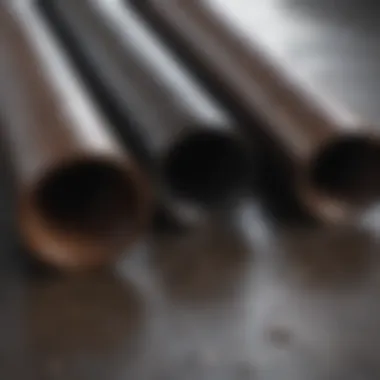
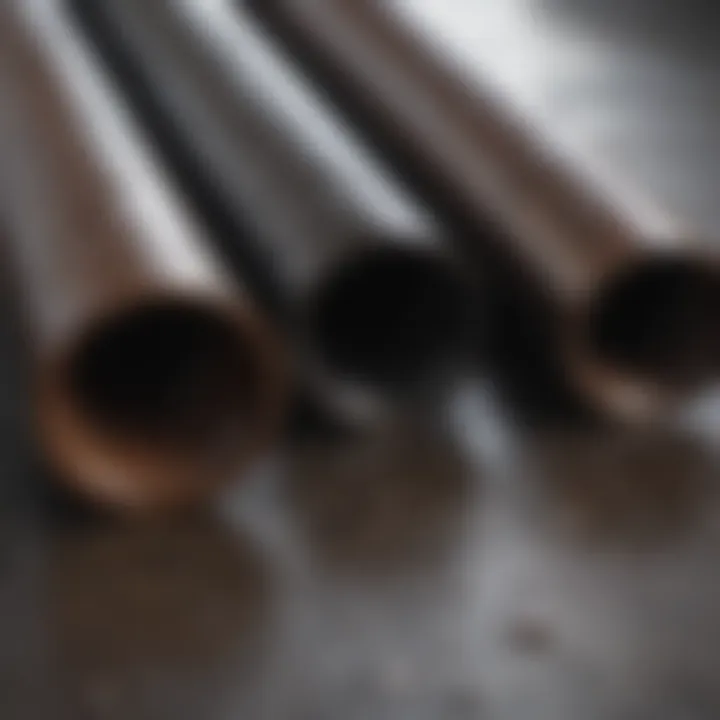
Material Composition and its Impact on Performance
The material of your drainage pipe isn't just an afterthought—it's the backbone of its overall performance. Pipes are available in a range of materials, each with its own strengths, weaknesses, and specific use cases.
For instance, PVC pipes are often praised for their lightweight nature and resistance to corrosion, making them ideal for various drainage applications. However, they may not withstand extreme temperatures. On the flip side, copper pipes have exceptional durability and can resist bacteria, yet they come with a higher price tag.
Choosing the right material involves analyzing the specific demands of your installation site. Think about:
- Soil Conditions: Some materials fare better in specific soils. For example, clay pipes perform admirably in cohesive soils but can crack in rocky conditions.
- Flow Capacity: Perforated options are generally more effective in applications that require drainage from surrounding soils.
Taking stock of these performance attributes can save you a lot of hassle in the long run.
Cost Analysis: Initial Investment versus Long-Term Value
It’s tempting to opt for the most affordable option right off the bat, but as the old saying goes: "penny wise, pound foolish." Investigating the cost involves much more than just the sticker price. You should evaluate both the initial investment and the long-term value it brings to your drainage system.
- Initial Investment: The price tag on materials can vary significantly. For instance, while PVC pipes usually come cheaper, their shorter lifespan might necessitate premature replacement.
- Long-Term Value: On the other hand, steel and copper may require a higher upfront cost but can offer longevity and require less maintenance over time.
Thus, consider running the numbers through a simple equation:
Total Cost = Initial Cost + Maintenance Cost + Replacement Cost
This perspective allows you to weigh your options better and ensures you’re getting the biggest bang for your buck.
Environmental Considerations and Sustainability
In today’s world, the importance of environmentally friendly choices cannot be overstated. As homeowners and responsible citizens, evaluating the sustainability of drainage pipes is becoming more crucial. From manufacturing processes to end-of-life disposal, each stage has its environmental footprint.
- Material Sourcing: For instance, opting for recycled PVC or clay can be a step in the green direction.
- Longevity: By investing in durable materials that last longer, you not only save on replacements but also reduce waste in the long run.
Before making a purchase, don't hesitate to ask how the materials align with your eco-friendly goals. There’s a broader responsibility that we all share, and sound choices can lead to greener solutions.
Installation Complexity and Maintenance Needs
When it comes to installation, not all pipes are created equal. Some materials necessitate specialized skills or machinery, which can jack up the installation cost and timeline. Understanding the complexity involved in installation can save you both time and money down the line.
Consider these elements:
- DIY vs. Professional Help: Are you planning to go the DIY route? Some materials such as PVC are often more user-friendly, while metals may require professional installation.
- Access for Maintenance: Easy access to pipes for repair or replacement should also form part of your decision. If your installation becomes a chore to inspect, it can compound issues in the future.
Embracing the right mix of these complex factors can lead you to a well-designed drainage system that does its job effectively while standing the test of time. The nuances may seem intricate, but taking the time to investigate each element can save much more hassle later.
Installation Techniques for Drainage Pipes
When it comes to drainage systems, the methods of installation play a pivotal role in their efficiency and longevity. Getting this right can be the difference between a smoothly functioning system and a host of problems down the line, including water accumulation and structural damage. Understanding these techniques isn't just about aesthetics; it's about ensuring that your space stays dry and safe for years to come. Whether you're a seasoned DIY-er or venturing into drainage installation for the first time, having an insight into various installation methods is crucial.
Standard Installation Procedures
Standard installation procedures often serve as the backbone for a successful drainage pipe setup. Here’s a rundown of the general steps involved:
- Site Assessment: Before even breaking ground, it's important to assess the site's drainage needs. This includes studying the landscape and any existing drainage issues.
- Planning the Layout: Next, you’ll need to decide on the layout of your drainage system. This involves marking out where the pipes will run, ensuring they slope properly for optimal water flow—generally, a slope of 1-2% is ideal.
- Excavation: Once the plan is in place, excavating the trench is the next step. This trench should be deep and wide enough to accommodate the pipes and consider any backfill material that may be required.
- Laying Down Material: After excavation, it’s time to lay down a base layer of gravel. This will help with drainage and support the pipes once they are placed.
- Pipe Installation: At this stage, the pipes can be installed. Make sure to connect them securely, checking for leaks as you go. Consider using a flexible sealant where joints meet to avoid future issues.
- Backfilling: Once the pipes are in place, backfill with soil and add more gravel on top to ensure proper drainage and stability.
"Good drainage isn't just a luxury; it’s a necessity to avoid future headaches!"
- Testing: Lastly, it's worthwhile to do a test run by running water through your system to identify any potential weak spots.
Trenchless Technology: An Innovative Approach
Trenchless technology has been a game-changer in the installation of drainage pipes, particularly in urban areas where digging up a yard or roadway is disruptive. This method allows for the installation of pipes with minimal surface disruption. Here’s how it works:
- Directional Drilling: A drill is used to create a path underground, steering around obstacles. This technique often requires less manpower and reduces labor costs.
- Pipe Bursting: In this method, a new pipe is thrust through an existing one. The old pipe is fractured, and the new pipe takes its place, cutting down on excavation time and preventing damage to surrounding areas.
- Sliplining: Here, a smaller diameter pipe is inserted into an existing pipe. The gap is then filled with grout to enhance durability.
The benefits are numerous: less disruption to your lawn, reduced restoration costs, and often a quicker turnaround time. However, this technology does have its drawbacks, such as higher upfront costs and specialized equipment, which may not always be available.
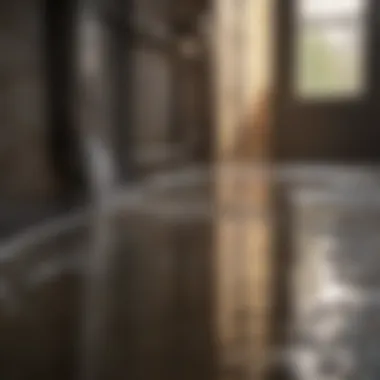
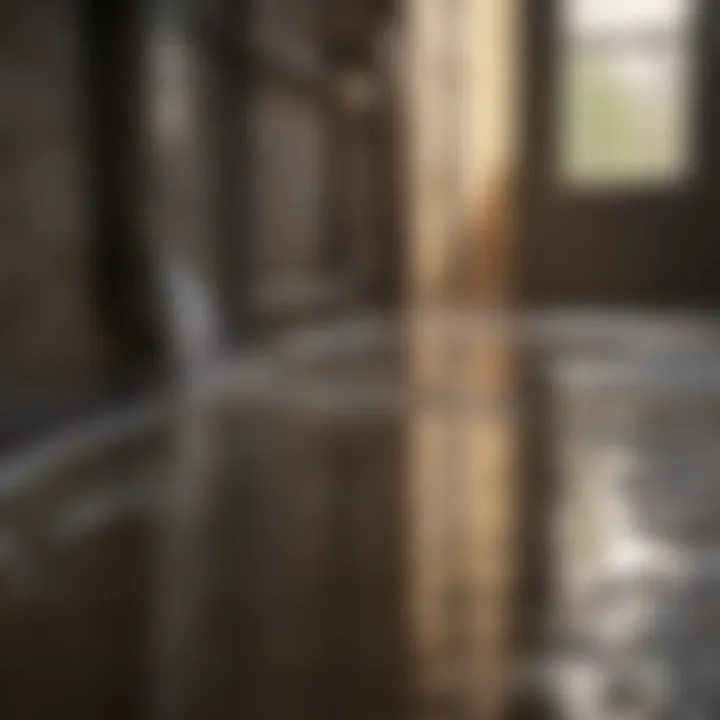
Pitfalls to Avoid During Installation
Even the most skilled DIY-ers can stumble upon issues if they aren’t careful. Here are some considerations to keep in mind:
- Ignoring Local Codes: Many municipalities have specific codes governing drainage systems. Not adhering to these could lead to fines or the need to redo work.
- Neglecting Slope: A common error is failing to ensure proper slope for drainage. Neglecting this could result in water pooling instead of flowing freely, which defeats the purpose of your system.
- Overlooking Piping Material Compatibility: Mixing materials without understanding their respective properties can lead to quick degradation under stress. For instance, joining PVC pipes with metal can lead to corrosion.
- Underestimating Maintenance Needs: Forgetting that drainage systems require occasional maintenance can lead to bigger issues down the line. Regular checks are a must.
In the world of drainage pipes, installation techniques matter. Investing time and care into each step will ensure that your system serves you well long into the future.
Testing and Maintenance of Drainage Systems
In the realm of drainage, pipes might seem like the stars of the show, but the spotlight really deserves to shine on testing and maintenance. Both are crucial for ensuring the pipes perform their job effectively over time. When homeowners overlook these aspects, they risk a range of issues, from minor inconveniences to major disasters involving flooding and structural damage. Regular testing and maintenance can make the difference between a peaceful basement during heavy rain and a soggy mess that has you sweeping up water with a mop.
Routine Inspections: Importance and Best Practices
Routine inspections serve as the backbone of proper maintenance. They are like regular check-ups for your plumbing system, helping catch problems before they escalate into costly repairs. The first step is to create a schedule—at least once a year—during which you will examine your drainage systems. Here are some key elements to focus on during these inspections:
- Physical Condition: Look at pipes for visible signs of damage, such as cracks, rust, or corrosion.
- Obstructions: Check for clogs caused by debris, roots, or sediment build-up, which can severely impede water flow.
- Connection Points: Evaluate joints and fittings. Leaking connections can lead to larger issues if not addressed promptly.
Employing best practices will facilitate efficient inspections. Ensure that you:
- Utilize adequate lighting to properly see into dark areas.
- Have the right tools on hand—like a flashlight, pipe camera, and a flexible claw tool for retrieving lodged debris.
Identifying and Addressing Common Issues
Even with the best of intentions, issues may arise. Identifying these common problems early can save you headaches down the line. Some typical concerns include:
- Drainage Backups: Often a sign of a blockage, which can lead to overflow and property damage.
- Strange Noises: Unusual sounds in drains can indicate trapped air or irregular water flow, hinting at deeper issues.
- Slow Draining Water: A clear signal that something is amiss. This could be a simple clog or potentially more extensive pipe damage.
To address these problems, prompt action is required. For simple blockages, using a plumber's snake can help clear the debris. For more complex issues, enlisting a professional who specializes in drainage systems might be the best bet. This way, problems are effectively managed before they grow into expensive repairs.
Use of Technology in Drainage System Monitoring
Technology has become an indispensable ally in the quest for effective drainage management. With advancements in monitoring systems, homeowners can now keep an eye on their drainage health from the comfort of their living room.
Here are some notable technological solutions:
- Smart Sensors: These devices can detect changes in water flow or saturation levels, alerting homeowners to potential issues early on.
- CCTV Drain Surveys: High-resolution cameras can be inserted into pipes, offering vivid imagery of the pipe interior, which is invaluable for trouble-shooting.
- Mobile Apps: Some applications can integrate with sensors to provide real-time data, maintenance alerts, and even recommendations based on monitored conditions.
Using such technology not only enhances awareness but also aids in fostering preventative maintenance habits. By staying informed about the state of your drainage systems, you can prevent crises before they fully develop, turning potential disasters into manageable maintenance questions.
"An ounce of prevention is worth a pound of cure."
This old saying rings especially true for drainage systems—regular checks and using modern technology can save you time and money.
Culmination: Making an Informed Choice
In the realm of drainage systems, making a well-informed choice about drainage pipes is crucial. This article has meticulously explored several types of pipes, their characteristics, and application potentials, shedding light on how these factors contribute to the longevity and efficiency of drainage systems. Choosing the right drainage pipe means considering various elements: material composition, installation complexities, maintenance requirements, and cost-effectiveness—all of which directly influence the performance and durability of your drainage solutions.
Emphasizing the significance of tailored choices, it's clear that what works for one household may not be ideal for another. Each material, be it PVC, copper, or clay, has inherent strengths and weaknesses that must align with your specific landscape and drainage needs. For instance, while PVC pipes are often favored for their affordability and resistance to corrosion, copper pipes might be considered for their durability and aesthetic appeal, despite their higher upfront cost. Thus, understanding the implications of each option helps mitigate future issues.
Furthermore, considering environmental impacts is not just trendy—it's essential. Selecting sustainable solutions can lead to a significant reduction in your ecological footprint. As awareness grows, so does the availability of eco-friendly materials that promise both efficiency and sustainability.
"Choosing the right drainage pipe is not just a matter of preference; it’s about safeguarding your investment and the environment."
In addition, the installation process shouldn't be an overlooked factor. Complex installations can lead to increased costs and maintenance challenges down the line. Opting for methods that allow for easy maintenance, like trenchless technology, can save much hassle in the long run.
Ultimately, taking the time to understand all these facets will empower you to make informed decisions about drainage pipes that not only meet your immediate needs but also stand the test of time. By weighing your options carefully, you're laying the groundwork for a reliable and effective drainage system that will serve you and your home well.
Summarizing Key Insights on Drainage Pipes
Reflecting on the journey through the world of drainage pipes, several insights emerge as vital for homeowners:
- Diversity of Materials: Different materials offer varied advantages. PVC is lightweight and cost-effective, copper is durable yet pricier, while clay offers historical reliability.
- Installation Matters: The installation process impacts overall system functionality. Complex methods can lead to higher long-term costs.
- Maintenance is Key: Regular checks and monitoring are crucial. Technologies exist to help keep your systems running smoothly.
- Environmental Responsibility: Choosing eco-friendly options is not just about compliance; it’s about making future generations’ lives easier.
The Future of Drainage Solutions
Looking ahead, it's hard not to be excited about the future of drainage solutions. As technology advances, we see an increasing integration of smart systems into drainage management. These systems can monitor flow and detect potential blockages, making maintenance proactive rather than reactive.
Furthermore, innovations in materials science are producing more sustainable options for homeowners. Biodegradable materials are on the horizon, which not only promise durability but also lessen the environmental impact.
Additionally, the rise in community awareness around sustainable practices is leading to a shift in regulations and best practices in drainage systems. Homeowners are now more encouraged to invest in systems that benefit the community and environment.







